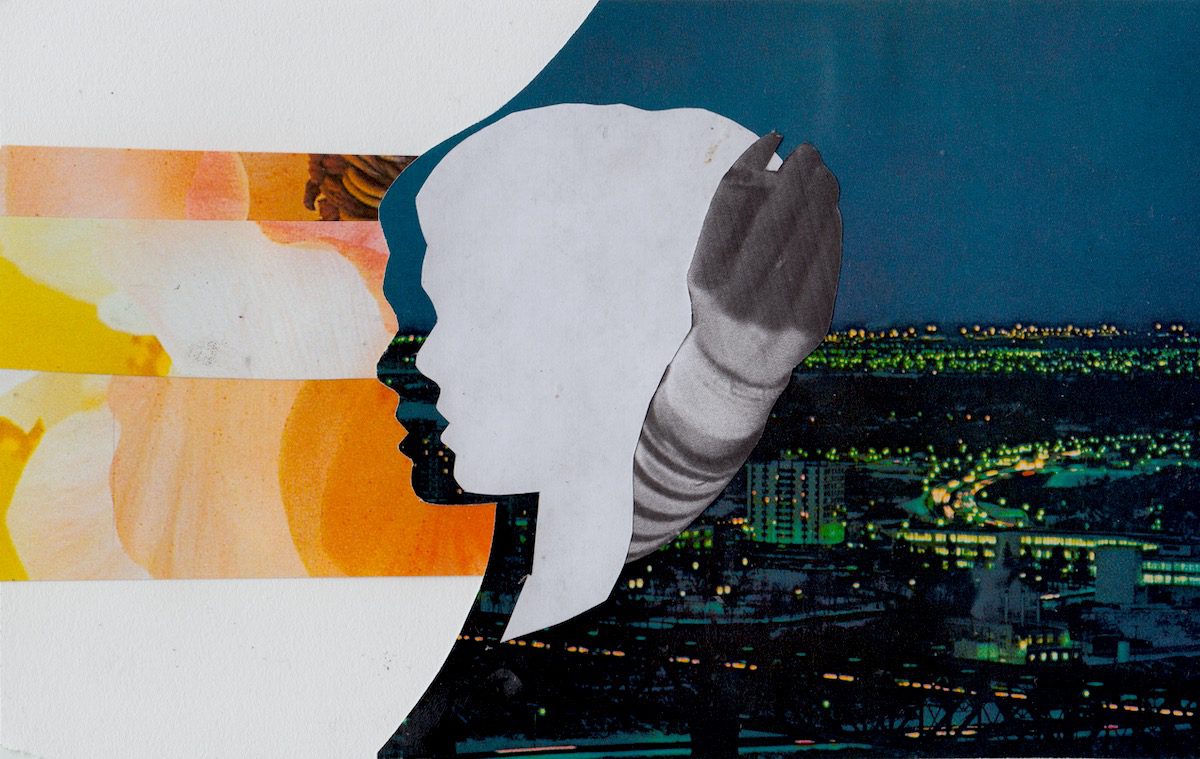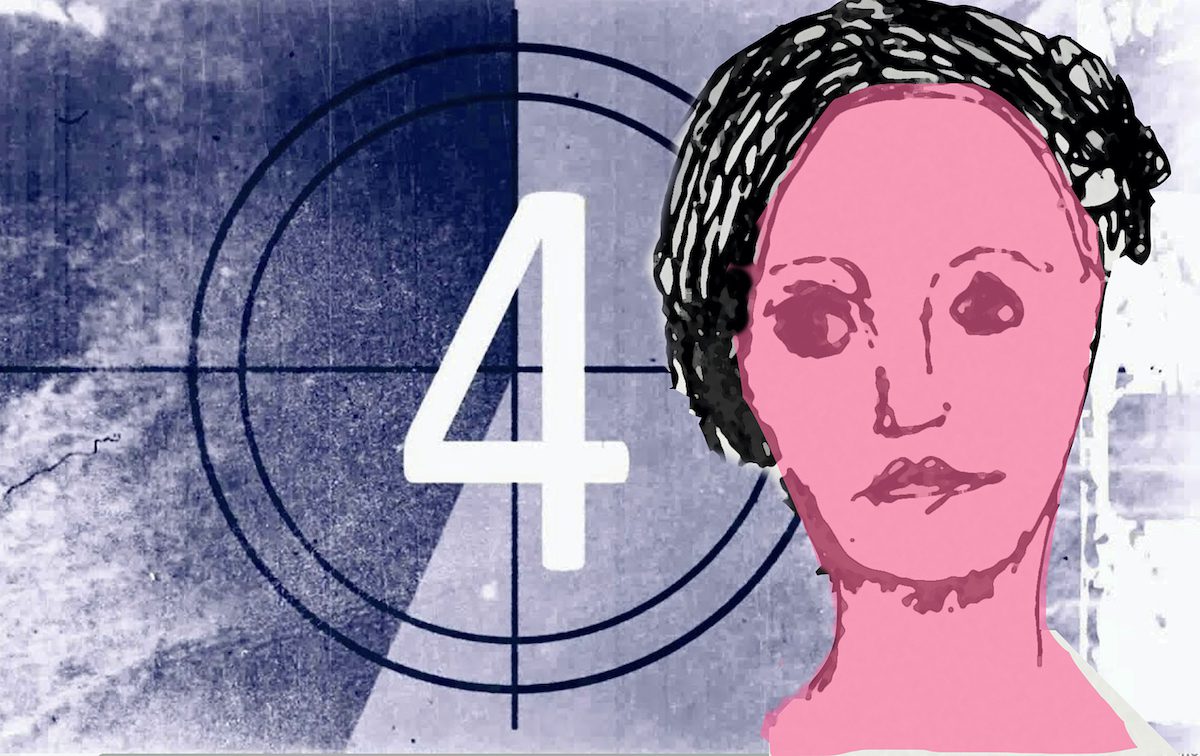I’m midway through teaching a course at Antioch University Seattle called Unreal Fiction and Film. Every week we pair a film or selection of shorts with a short story. The class is scheduled from 7-10 PM on Mondays, a brutal slot, but every week I’ve left invigorated by the discussion. While recognizing that the very nature of cinema is “unreal,” and that what we think of as “realism” is a codified system of contrivances, I’ve sought to present films that in some way challenge conventional representational of physical reality and time.
Week 1
I showed Edwin Porter’s 1903 short “The Gay Shoe Clerk.” It’s basically a quick gag–a young woman and her mother appear in a shoe store. As the clerk is sizing the young lass, he takes the opportunity to fondle her foot. Oh dear! The mother hits the clerk with her handbag. The end.
What makes this film foundational is the editing. We see a medium shot of the clerk and shoppers in the store. The perspective then shifts to a close-up of the man fondling the woman’s foot. It’s the sort of edit we take for granted, and we don’t question the continuity–we know the foot belongs to the woman we were just looking at. What I hoped to demonstrate was that the early experiments with film editing resulted in a cinematic grammar that we have internalized without paying it too much notice.
We then moved on to the Porter film that caused audiences to literally leap out of their seats, the first blockbuster, The Great Train Robbery. The bad guy at the end points his pistol at the camera and pops off a shot. Is the bullet going to come out of the screen and strike you dead? Better duck!
After Porter I screened George Melies’s “Le Voyage dans la Lune” from 1902. This is the classic rocket-hits-the-moon-in-the-eye movie. Take a look.
So sorry, I meant this:
From this film class staple we jumped ahead a couple decades to Buster Keaton’s Sherlock Junior. I love watching silent slapsticks because I love thinking about the ways humor can be timeless. As much as I admire Charlie Chaplin and Harold Lloyd, Keaton remains my favorite of the silent comedians partly because what he did was so counterintuitive. Where Chaplin’s face conveyed everything you needed to know about what his tramp was thinking and feeling, Keaton–famously nicknamed Old Stone Face–was about as facially expressive as a light socket. Which meant that he drew his audience into the screen, rather than delivering from it, providing a blank canvas onto which we might project ourselves. Watching Sherlock Junior right after the Porter shorts revealed how sophisticated audiences became. There’s this wonderful sequence in which Keaton, playing a projectionist, climbs onto a movie theater stage and literally enters the movie that’s playing. All this happens within a dream. Add to this a crazy funny motorcycle chase and boy howdy do you have a movie!
After a great discussion we took a break and reconvened to discuss Wells Tower’s “Everything Ravaged, Everything Burned.” What does this story of pillaging Vikings have to do with the films we watched? Nothing, nothing at all. I just love that story and will teach it any chance I get. The “blood eagle.” Damn.
Week 2
All right so we sort of laid the foundation in the first class. Now I wanted to push the envelope a bit. First up was a film I’ve blogged about here before, “Un Chien Andlou” by Luis Buñuel. After that I screened the Spanish director’s L’Age Dor. While Buñuel’s short exhibits no agenda besides letting irrationality take the reigns, L’Age Dor feels very much like a political film, a sneering, shaming assault on the conventions that keep society humming along at the cost of those being ground under the heels of wealth and privilege.
I’d argue that’s most shocking about the film–and what had it banned and out of circulation from 1933 to 1979–isn’t the toe-sucking scene, but the final few minutes of the film. In a direct reference to Sade’s 120 Days of Sodom, we see four libertines departing a castle where, we’re informed, an orgy has just taken place. And holy crap if one of the libertines isn’t the spitting image of Jesus Christ. Watching this film again in a room full of students I was struck anew by the audacity of the filmmaker. To draw a parallel between Christ and de Sade, and further, to end with a shot of scalps nailed to a crucifix… wow. Just wow.
And it’s interesting to think about how Buñuel reached for that catalogue of evils for inspiration in 1930, and 45 years later Pier Paolo Pasolini went to the same well for his unfathomably brutal Salò: 120 Days of Sodom. The two films bookend the 20th century, the first a premonition, the second an autopsy. Luckily for my class, I spared them the Pasolini.
As if to lighten the mood (but not by much), we discussed George Saunders’s “Sea Oak” in the final hour of the class. Good old Aunt Bernie.
Week 3
We backtracked a bit this week, into German Expressionism, specifically Robert Weine’s The Cabinet of Dr. Caligari. There’d be no Shutter Island or Careful without Caligari. Watch out for Cesare!
After this masterpiece of psychological horror, we discussed Kafka’s “In the Penal Colony” for an hour. I’ve taught this story before, and like to begin by drawing little stick figures of the characters on the board, then drawing the hideous machine with its harrow and designer and bed of cotton. Great fun. And moreso than the two weeks previous, the film and the story fit together nicely this round. Each about control in some way, each perhaps a warning from the early years of the 20th century that the world was about to become an even more frightening place.




